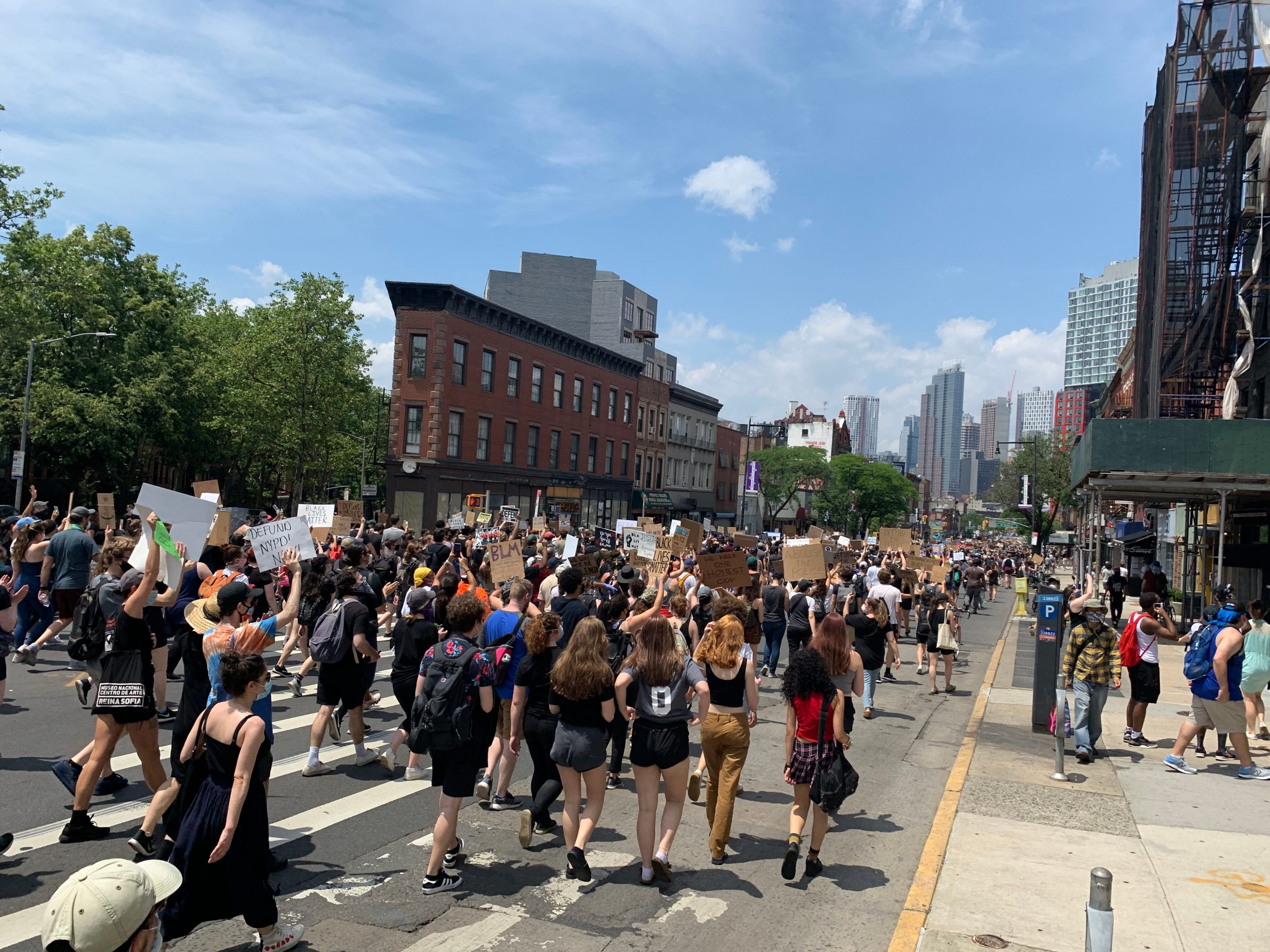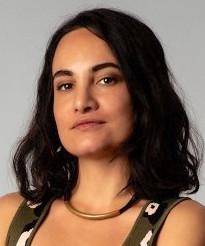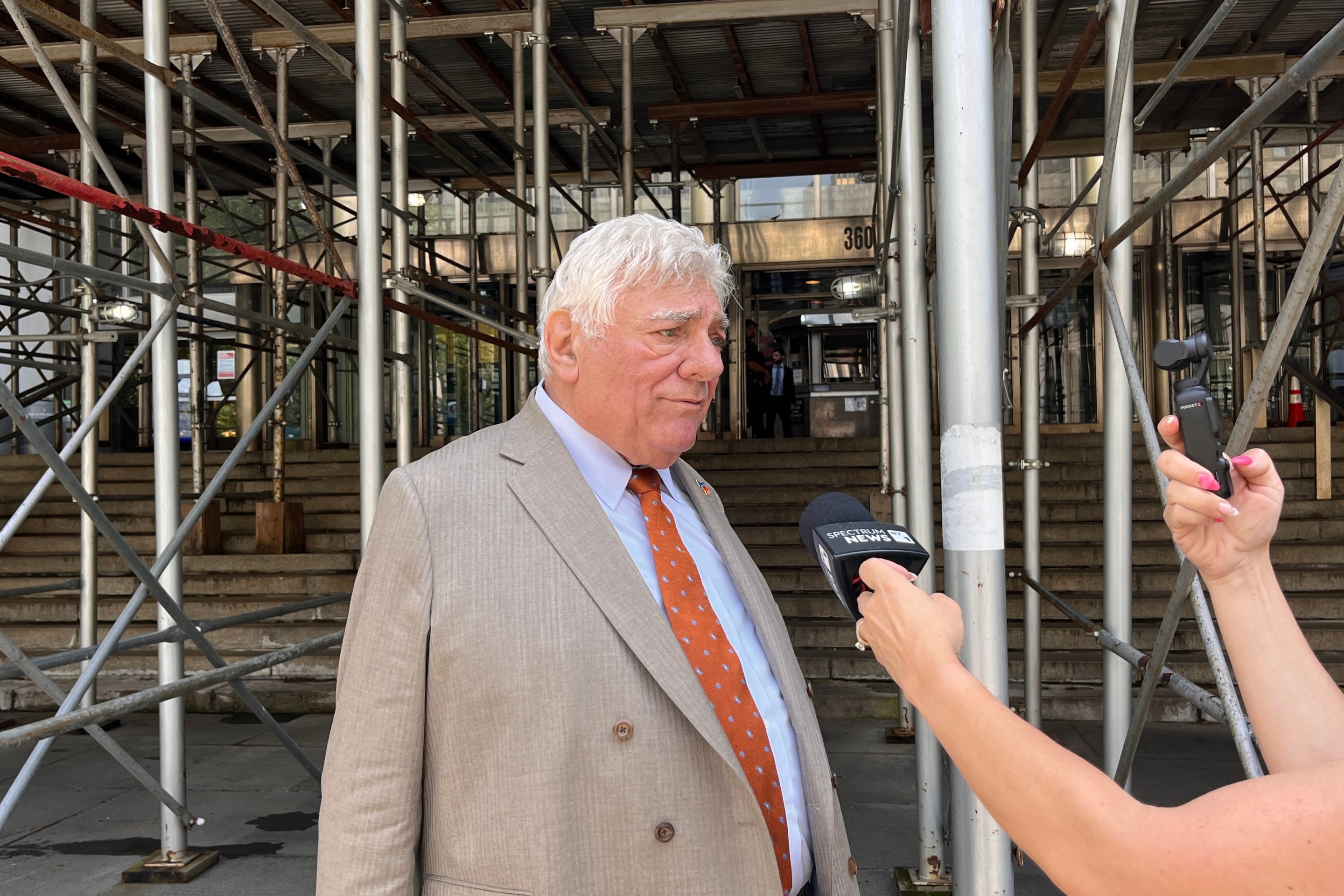New Yorkers are rightfully taking to the streets to protest a racist police system that kills and terrorizes black people. But the streets are being turned against us.
When an organizer for the Red Rabbits, the safety marshals of the Democratic Socialists of America, cautioned hundreds of members on Wednesday, "You never know when you're gonna be stuck on a bridge for two hours," she wasn't talking about getting stuck in the city's notorious traffic. She was referring to the hundreds of New Yorkers the NYPD trapped on the Manhattan bridge last Tuesday.
The levity of the statement — contrasted with the seriousness of the situation — made some of us chuckle, but the quip belies the real danger of being penned in by the state for the mere act of publicly asserting that black lives matter.
Streets, parks, sidewalks, and plazas are supposed to be open, public forums in which people can come together in times of both peace and struggle. As a housed, able-bodied, upper-middle class white woman, I seldom have felt public spaces weren't designed for me. I am privileged to be able to move in and out of anti-police, anti-racism spaces should I choose.
What the past week should lay bare is the reality that when public spaces are occupied by armed agents of white supremacy and capitalism, they cannot be used or accessed by everyone in the same way, even to exercise rights. The very spaces that are meant to be safe havens for free and open expression are turned against people of color, immigrants, the unhoused, and those standing alongside them in solidarity.
When armed white men protest "the economy re-opening," they're met with stoic (and masked) faces that put the Royal Palace Guard to shame. When black people and allies protest the carceral state, we're met with batons. "Unsurprising," said Marian Jones, a black organizer at Transportation Alternatives and fellow DSA comrade, "since the role of policing and prisons is to criminalize and bring violence upon any activity that is considered a threat to the status quo."
“I just saw a woman get her head bashed in because she walked away from an officer and didn’t walk away fast enough, says David Perez, a Mott Haven resident. “Are we in America. Did I wake up in another fucking country?” pic.twitter.com/KXNsVIdHiu
— Jake Offenhartz (@jangelooff) June 5, 2020
As I wrote this, the NYPD was using public space to threaten, punish, kettle, capture, and terrorize. Officers were stealing bikes, denying subway access, and ramming people with SUVs — all stark examples of the kind of policing that black and brown people constantly face, meant to signal to them that the streets aren’t theirs.
“NY’s Finest”. Disgusting. #BlackLivesMatter #riots2020 #JusticeForGeorgeFlyod pic.twitter.com/GP5vcXRlqy
— Marco (@chieffymac11) May 31, 2020
"The notion that police do not keep us safe or deter crime is not a radical concept," says Jones. "Black people have always felt this, and more and more members of the mainstream public are starting to catch on."
Police cruelty doesn't always start in the street, but still may end up there. Sheriffs will still be evicting families, even rent-paying families, from their homes. These families, overwhelmingly non-white, many headed by women, may end up living on the street, the subways, or in parks — public spaces in which they will be subject to further state-sanctioned violence. NYPD homeless "sweeps" will continue unabated during coronavirus. Even the MTA, which is controlled by Gov. Cuomo and has its own police force, is moving forward with hiring hundreds more armed officers to sweep subway stations at a price tag of $260 million over three years, massive revenue shortfall be damned.
So the cycle of violence in public spaces continues — and will continue, certainly so long as the NYPD's budget under Mayor DeBlasio remains a staggering and barely touched $5.6 billion dollars while other social programs are bled dry. There doesn't seem to be a problem New York's gaslighting "leadership" won't beat back with a baton.
"Do you think there's any sensible police officer who believes their job is bludgeoning a peaceful person with a baton?" - @NYGovCuomo
— NYC-DSA 🌹 (@nycDSA) June 4, 2020
Just like @NYCMayor, Cuomo hasn't got a clue.#DefundTheNYPD #BlackLivesMatter pic.twitter.com/ZGx2Q2hGCz
Although I wasn't trapped on the Manhattan Bridge last Tuesday, I spent several days marching around Brooklyn. Among moments punctuated by police brutality, two chants would arise from the marchers:
- "Who keeps us safe? We keep us safe!" is a commitment to holding each other accountable, working to prevent and stop violence in our communities by being connected, knowing each other, knowing people’s abilities and circumstances, offering the resources you have and connection to show up for each other, and rejecting the role of the police.
- “Whose streets? Our streets!” reclaims space, literally and figuratively. Marian told me what it means to her: “These streets are ours and we can use them to rally, march, demonstrate, and express ourselves in any way we see fit. We are saying this neighborhood belongs to us, this community is ours, our lives matter, and we’re not going anywhere."
Nicole A. Murray (@nicoleamurray) is a member of the Ecosocialist Working Group of NYC-Democratic Socialists of America.







